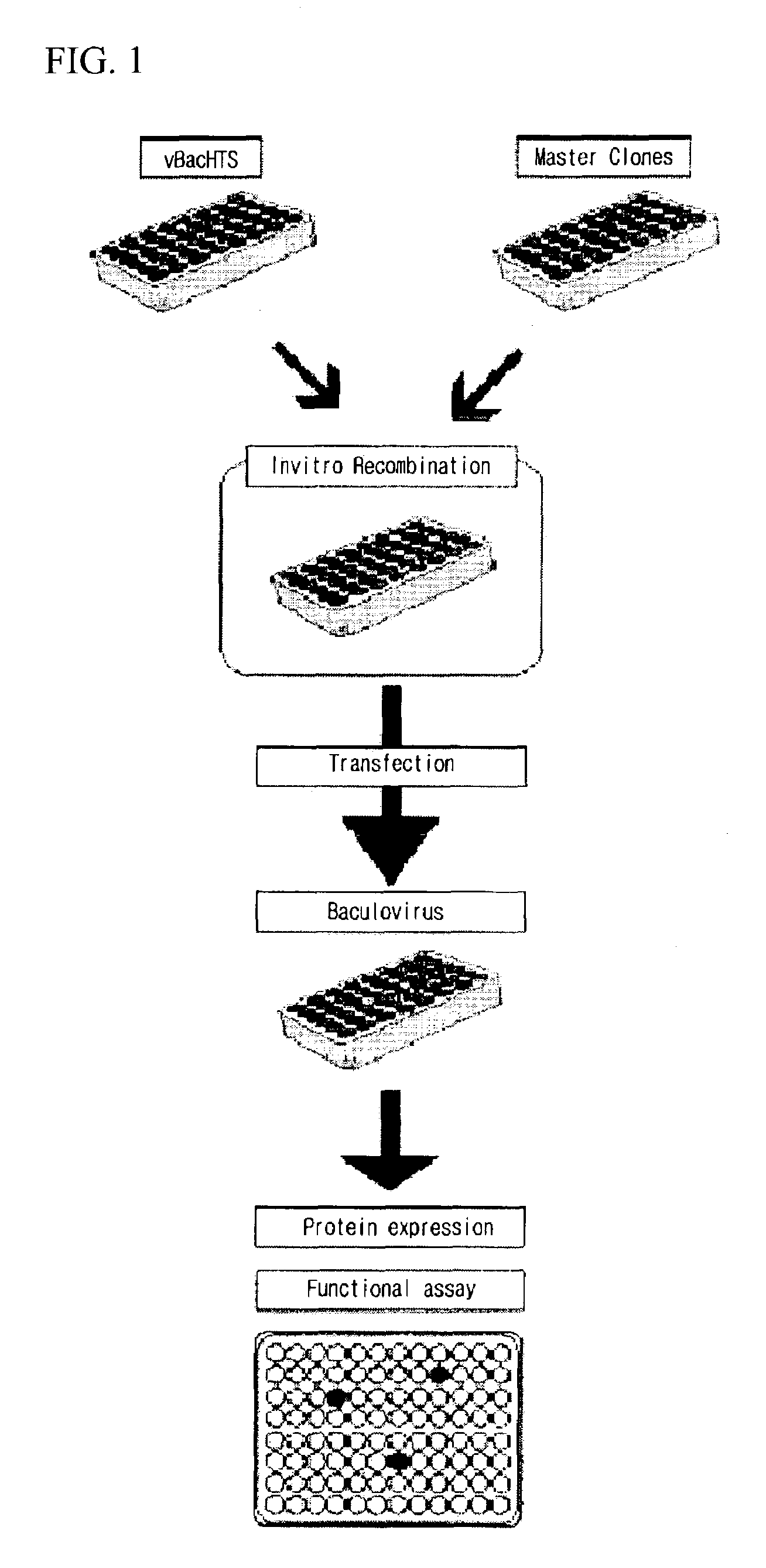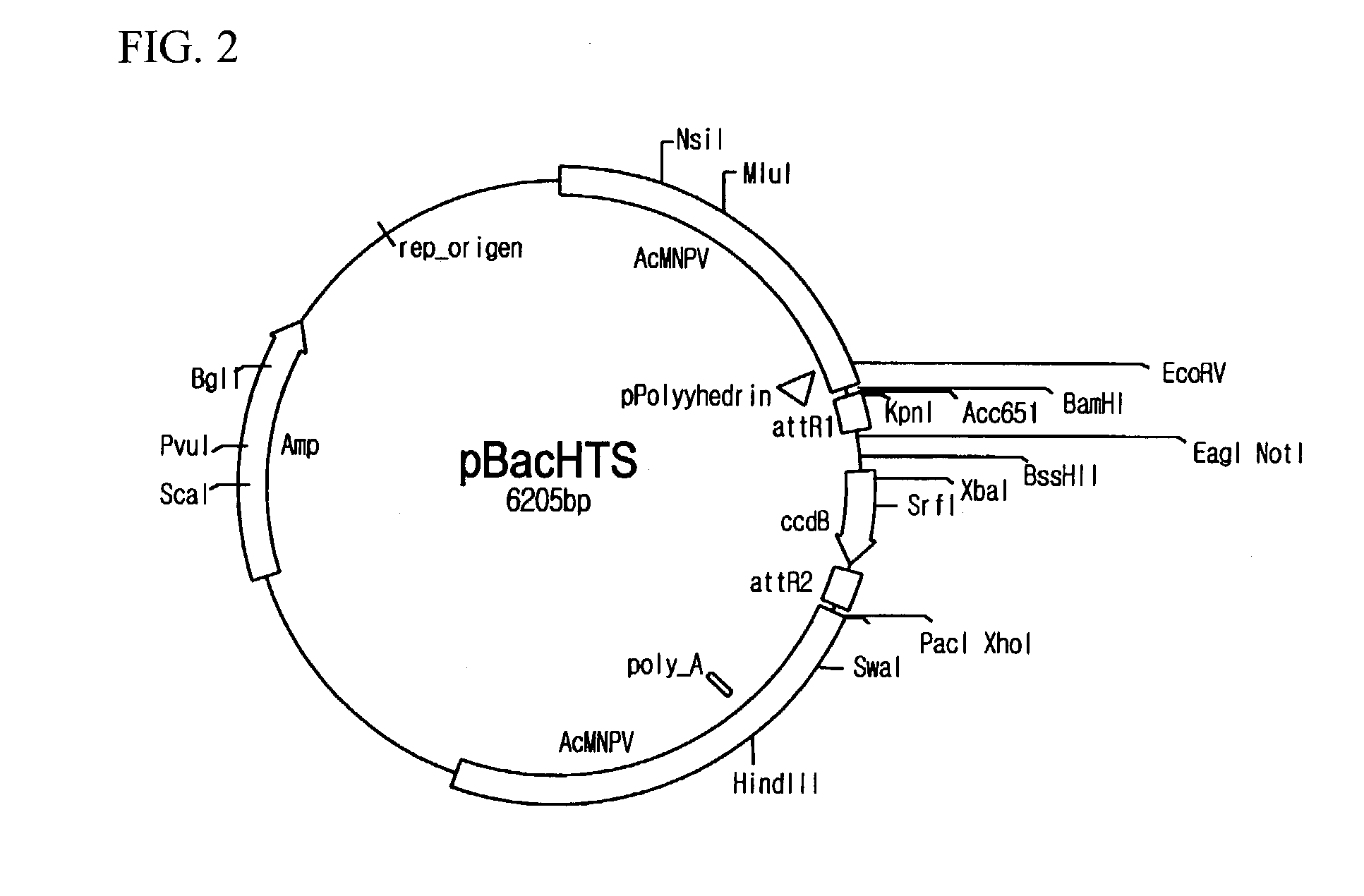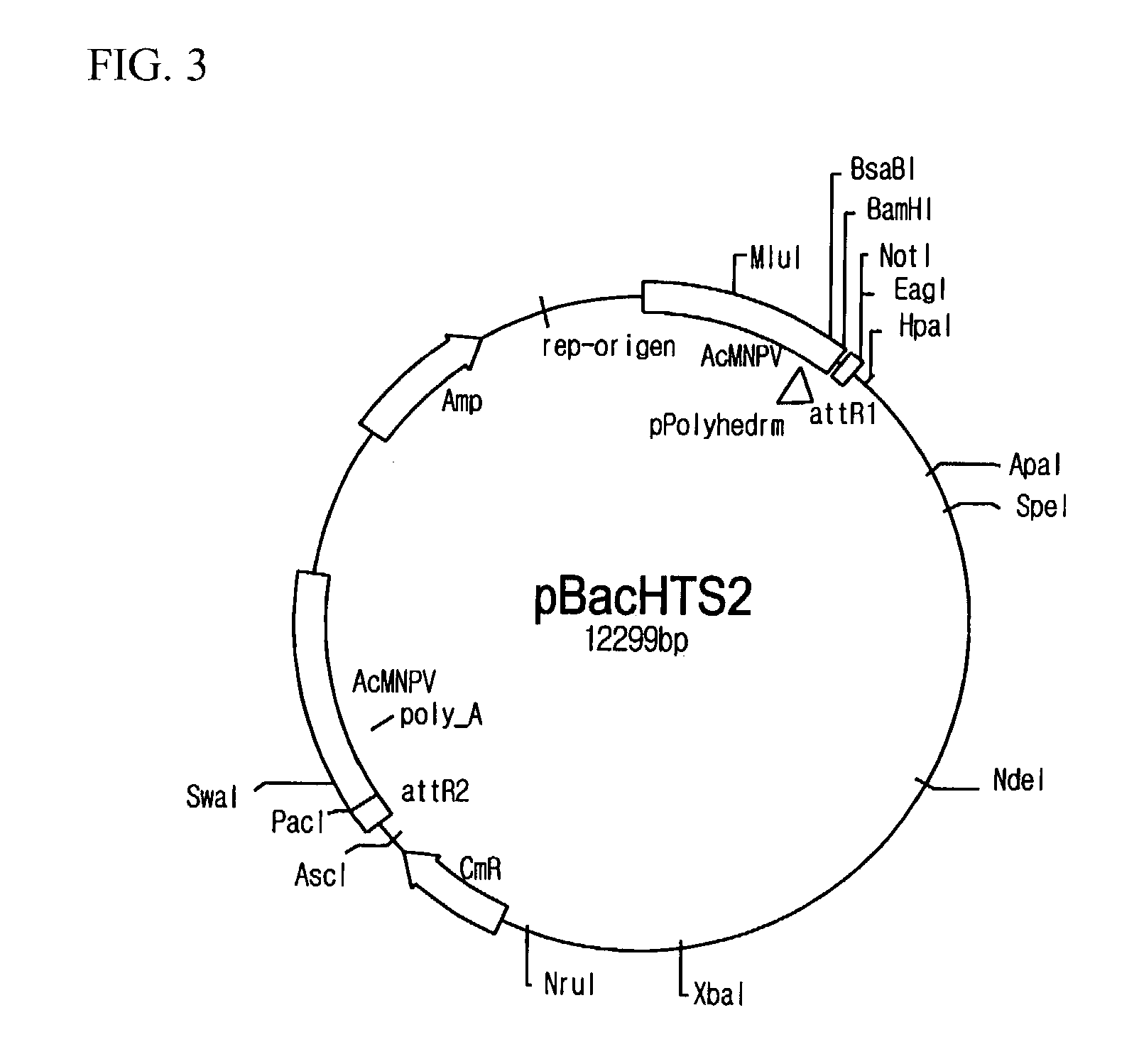High throughput system for producing recombinant viruses using site-specific recombination
- Summary
- Abstract
- Description
- Claims
- Application Information
AI Technical Summary
Benefits of technology
Problems solved by technology
Method used
Image
Examples
example 1
Preparation of pBacHTS
[0067]pBacHTS viral vectors were prepared. For the preparation, firstly, pBacPAK8_R1 (see FIG. 4) was provided by cloning amplified attR1 sites and Bsu36I recognition base sequences at BamHI / EcoRI sites of a shuttle vector of pBacPAK8 (Genebank: U2446, Clontech, California, U.S.A.) and transforming DH5α (Life Technologies Inc., Maryland, U.S.A.) with the cloned vector, and then by incubating and screening in agar medium including ampicillin. Likewise, pBacPAK8_R1R2 was prepared by cloning PCR amplified attR2 sites and Bsu36I recognition site sequences at EcoRI / PacI site sequences of pBacPAK8_R1 (see FIG. 5). In order to obtain pBacHTS, a DNA fragment (427 bp) including ccdB gene from EcoRI digested fragments of pEntr4 plasmid (Invitrogen, California, U.S.A.) was inserted to the pBacPAK8_R1R2, and then the resulting plasmid was transferred to DB3.1 cell (Life Technologies Inc., Maryland, U.S.A.). pBacHTS contained two different Bsu36I recognition sequences betwe...
example 2
Preparation of pBacHTS 6His, pBacHTS GST, pBacHTS HisGst, pBacHTS GFP and pBacHTS Flag
[0068]A fusion tag was inserted into the site in back of the polyhedrin promoter in order to prepare recombinant baculovirus expressing fusion proteins. pBacHTS_Gst was designed for the preparation of an expression vector for glutathione-s-transferase (GST) fusion protein. In order to accomplish this, pGEX-2T (Genbank: U13850) was PCR-amplified using a primer including Bg1II and a primer including BamHI linker, which in turn was treated with Bg1II and BamHI and then was inserted into pBacHTS / BamHI restriction sites. In addition, pBacHTS_His was designed for the preparation of a vector expressing His tag fusion protein by inserting 6 His linker to the BamHI site of pBacHTS. Furthermore, pBacHTS_HisGST was designed by inserting Bg1II-and-BamH1H-treated GST genes, which were PCR-amplified, to the BamHI site of pBacHTS_His. On the other hand, the green fluorescent protein (GFP) gene was PCR-amplified u...
example 3
Preparation of DNA of vBacHTS, vBacHTS His, vBacHTS HisGST and vBacHTS GFP Viruses
[0069]Baculoviruses of which polyhedrin loci were replaced by pBacHTS plasmids were prepared using homologous recombination. Briefly, Sf21 insect cells were transfected with a mixture of pBacHTS plasmid, Bsu36I digested BacPAK6 viral DNA (Clontech, California, U.S.A. #6144-1) and Lipofectin (Life Technologies Inc., Maryland, U.S.A.) to induce homologous recombination in the cells. The recombinant viruses were isolated through twice-repeated plaque assays, which in turn were subjected to PCR. The purified viral clone was named vBacHTS virus (SEQ. ID No. 1: the sequence of its polyhedrin locus) (see FIG. 15). As disclosed in FIG. 13, pBacHTS His (see FIG. 8), pBacHTS_HisGst (see FIG. 9), pBacHTS_GST and pBacHTS_GFP were respectively transferred together with the BacPAK6 virus to generate vBacHTS_His (SEQ. ID No. 2: the sequence of its polyhedrin locus), vBacHTS_HisGst (SEQ. ID No. 3: the sequences of its...
PUM
| Property | Measurement | Unit |
|---|---|---|
| Fraction | aaaaa | aaaaa |
| Fraction | aaaaa | aaaaa |
| Fraction | aaaaa | aaaaa |
Abstract
Description
Claims
Application Information
 Login to View More
Login to View More - R&D
- Intellectual Property
- Life Sciences
- Materials
- Tech Scout
- Unparalleled Data Quality
- Higher Quality Content
- 60% Fewer Hallucinations
Browse by: Latest US Patents, China's latest patents, Technical Efficacy Thesaurus, Application Domain, Technology Topic, Popular Technical Reports.
© 2025 PatSnap. All rights reserved.Legal|Privacy policy|Modern Slavery Act Transparency Statement|Sitemap|About US| Contact US: help@patsnap.com



